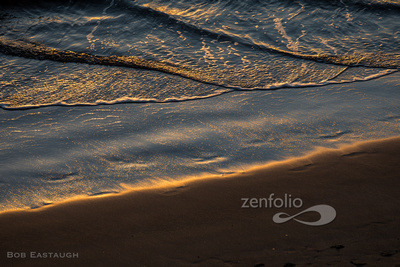Much Ado About Much Ado/Theater Alaska in Treadwell
There are some challenges in putting on a live drama written 427 years ago. Like vocabulary. And the potential fact audiences back then understood not only complex sentences but also political, social, and bawdy references much better than those of us attuned to different speech rhythms and usage and humor.
But it helps when the author has a reliable reputation for turning out some pretty good work. As William Shakespeare did in 1599 or so when he first staged Much Ado About Nothing.
And it helps immensely when a dedicated local production company assembles a skilled cast that flat-out knows its lines and marks, and acts with skill and emotion and, importantly, enthusiasm. Theater Alaska has once again produced a wonderful show, staging Much Ado About Nothing in the oddly intimate setting of the Treadwell Mine Office Building. The cast, top-to-bottom, is superb and totally focused, and seemingly enjoying themselves as much as the audience at Shakespeare's wit and laugh-out-loud lines at the opening night performance. They are masters as well of quick costume and character changes.
The plot itself is another variation of Shakespeare's comic recipes: matched (Hero and Claudio) and mis-matched (Beatrice and Benedick) pairs of lovers and good guys and bad guys (Don Pedro and bastard sibling Don John), deceit that injects a potential for tragedy, and a happy resolution. The actual trickery seems cruel, even for a happy-ending comedy. Hero is an innocent and winsome victim, and almost all the men (except only the Friar and, reluctantly, Benedick) immediately condemn her. The truth comes out only fortuitously, and in spite of the incompetence of the constable. It is a little unclear what the ultimate consequences are for Don John and Borachio, and for Margaret, who had an essential part in betraying her lady, but she seems forgiven.
Skilled acting made the play. Every cast member was terrific. So it seems unfair to single out the actors playing the most predictably crowd-pleasing roles: Beatrice (a both measured and powerful Natalia Spengler, born to play Beatrice); Benedick (Enrique Bravo, with his usual verve and energy); and Dogberry (Scout James, who managed the constable’s idiocy with conviction and a straight face). Every actor inhabited her or his roles with skill and emotion.
July 2: There are two new additions, at the very end. The conversions seem consistent with the production and theme.
 untitled-BK7A0860-Enhanced-NR-2
untitled-BK7A0860-Enhanced-NR-2
 untitled-BK7A1205-Enhanced-NR
untitled-BK7A1205-Enhanced-NR
 untitled-BK7A1218-Enhanced-NR-2
untitled-BK7A1218-Enhanced-NR-2
 BK7A0501-Enhanced-NR
BK7A0501-Enhanced-NR
Great fun for the audience, of course, but made greater by deep appreciation for the dedication that cast and crew brought to the production.
I took some photos during the opening night show. Some are attached here. A dedicated gallery on my website holds 59 images from this performance. Here is the direct link to that gallery.
https://bobeastaughimagery.zenfolio.com/p854127623
Viewing is free and cast and crew can download the images (ideally with photo credit to me if they are republished). And as always, I like to know if someone downloads and enjoys my photos. Please let me know. Thank you.
 BK7A9652-Enhanced-NR
BK7A9652-Enhanced-NR
 BK7A9930-Enhanced-NR
BK7A9930-Enhanced-NR
 BK7A0115-Enhanced-NR
BK7A0115-Enhanced-NR
 untitled-BK7A0188-Enhanced-NR
untitled-BK7A0188-Enhanced-NR
 untitled-BK7A0273-Enhanced-NR
untitled-BK7A0273-Enhanced-NR
 BK7A0306-Enhanced-NR
BK7A0306-Enhanced-NR
 untitled-BK7A0343-Enhanced-NR
untitled-BK7A0343-Enhanced-NR
 BK7A0396-Enhanced-NR
BK7A0396-Enhanced-NR
 BK7A0412-Enhanced-NR
BK7A0412-Enhanced-NR
 BK7A0463-Enhanced-NR
BK7A0463-Enhanced-NR
 untitled-BK7A0590-Enhanced-NR
untitled-BK7A0590-Enhanced-NR
 BK7A0716-Enhanced-NR
BK7A0716-Enhanced-NR
 untitled-BK7A0722-Enhanced-NR
untitled-BK7A0722-Enhanced-NR
 BK7A0785-Enhanced-NR
BK7A0785-Enhanced-NR
 BK7A1068-Enhanced-NR
BK7A1068-Enhanced-NR
 BK7A1159-Enhanced-NR
BK7A1159-Enhanced-NR
July 2 Note: I'm adding two additional images, different versions of others already posted, but converted to B&W. A little extra drama. And a throwback: there was a time when I took photos of some college drama productions for the college paper. They were Yale Drama School productions.
And didn't Shakespeare write in black and white? (All the classic 1920s-1940s movie versions of Shakespeare's plays were black and white.)
 untitled-BK7A0343-Enhanced-NR-2-2
untitled-BK7A0343-Enhanced-NR-2-2
 untitled-BK7A1205-Enhanced-NR-2
untitled-BK7A1205-Enhanced-NR-2
Comments


After a lifetime of mainly expressing myself with words, my postings here will mainly rely on images. They will speak for themselves to some extent, but I'll usually add a few comments of explanation. I've taken photographs for decades, since the 1950's, inspired in part by my father's photographic skill. Four years of photo assignments and quality darkroom time eventually gave way to decades of casual and family picture-taking. I re-immersed myself when I left film and turned to digital.